

NAAC-Accredited 'A++' - Grade 2(f) & 12(B) status (UGC) |ISO
9001:2015 Certified | FIST Funded (DST) SIRO(DSIR)

INNOVATIVE TEACHING METHODOLOGIES
The Department of Information Technology employs innovative teaching-learning approaches to foster continuous student development and enhance their professional competencies. These innovative teaching methods promote creativity, critical thinking, and active engagement among students. The faculty members incorporate various new strategies, tools, and technologies, moving beyond traditional lecture-based instruction to provide more dynamic, interactive, and personalized learning experiences. The innovative teaching methods used by the faculty members are:
- Peer Teaching
- Inquiry Based Learning
- Jigsaw Method
- Case Presentations
- Competency Based Learning
- Certification Based Learning
- Project Evaluation through Hackathon Mode
1. Peer Teaching
Goal:To enhance the learning experience among students through their peers and foster a collaborative environment.
Process:- Self-nominations are invited from students who want to act as peer teachers.
- A committee consisting of the Head of the Department, Student Development Coordinator, and Class Counselors interview and select students.
- The committee allots the number of hours to be handled for slow learners.
- Regular monitoring is done by the respective faculty members and the student development committee; feedback is taken from the students.
- Enhances understanding of the subject matter and improves pass percentage of slow learners in end-semester examinations.
- Creates a supportive atmosphere where learners can ask questions without fear of judgment.
- Learners understand concepts at their own pace with peer explanations.
- Reduces anxiety related to job preparation and allows safe practice of interview techniques.
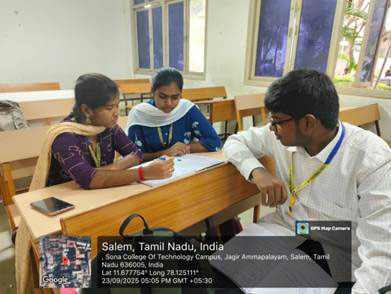
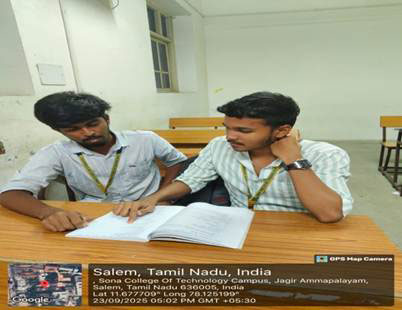
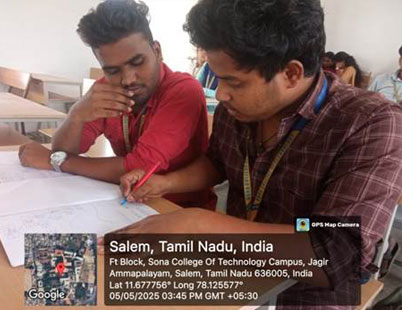
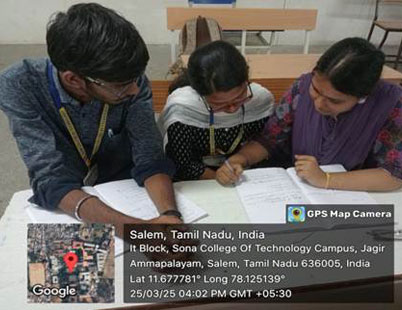
- https://youtube.com/shorts/uzTXdGNdOaI?feature=share
- https://youtube.com/shorts/oisRiY_01Ck?feature=share
- https://youtube.com/shorts/CKV7hLlS0KE?feature=share
- https://youtube.com/shorts/2gQxXfbYSYQ?feature=share
2. Inquiry Based Learning
Goal:To foster deeper understanding of content through student-driven investigation, critical thinking, and problem-solving skills by encouraging students to actively explore and investigate topics.
Process:Inquiry-based learning can include activities like:
- K-W-L Charts (Know-Want to Know-Learned)
- Think-Pair-Share
- Debates
- Scientific Investigations
Conducting a debate requires:
- Define the Debate Topic: Choose a clear and thought-provoking topic allowing strong arguments on both sides.
- Set the Debate Format: Number of speakers per team, speaking time limits, and Q&A sessions.
- Assign Roles and Teams: Affirmative, Negative, Moderator, Timekeeper.
- Prepare credible evidence and counter arguments.
- Increased student involvement.
- Encourages independent thinking, curiosity, and lifelong learning.
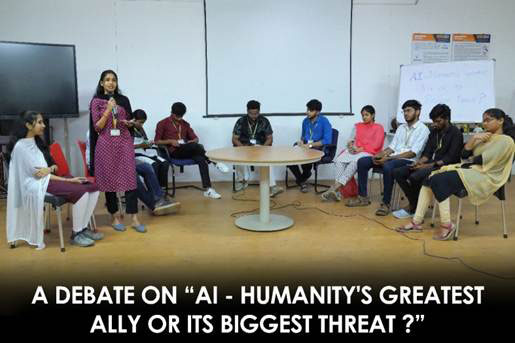
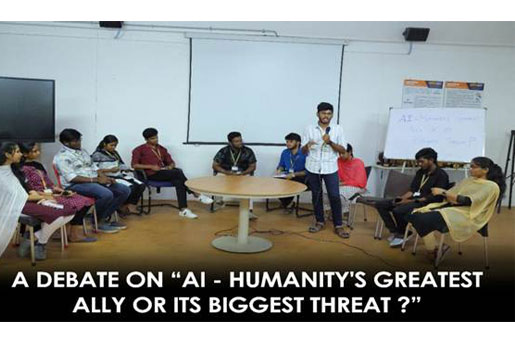

- https://youtu.be/SCx4I5VMico
- https://www.linkedin.com/posts/nithiksha-mano_ai-machinelearning-ethicalai-activity-7305850477563326464-z0Uz?utm_source=share&utm_medium=member_android&rcm=ACoAAEDWfSkBYwfhM7e0QsmjvSGOfKizffQYJwo
3. Jigsaw Method
Goal:To promote collaborative learning by fostering interdependence among classmates to achieve a common objective.
Process:- Instructor divides students into different groups; each group is assigned a specific topic divided into portions.
- Students with similar portions form expert groups and discuss among themselves.
- Students return to their original group and share new knowledge.
- Increases student involvement, curiosity, and self-directed learning.
- Develops independent thinking and analytical skills.
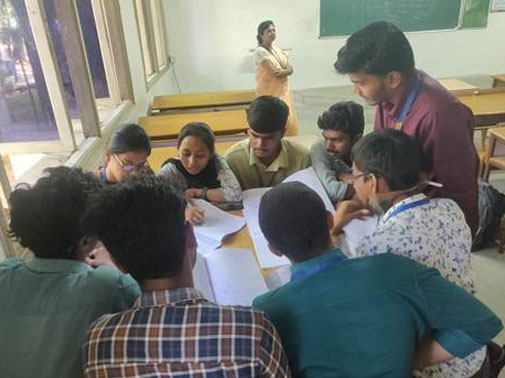
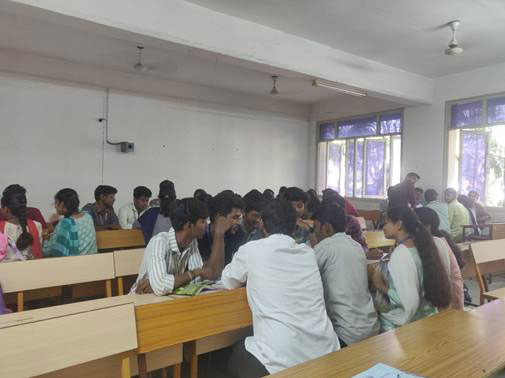
4. Case Presentations
Goal:To bridge the gap between theoretical concepts and real-world applications.
Process:- Instructor chooses a topic relevant to real-world problems.
- Students collect materials related to the topic and conduct presentations.
- Instructor evaluates participation, analysis, and teamwork.
- Applies academic knowledge to practical and real-life problems.
- Increases student participation through discussions and interactive analysis.
- Fosters curiosity throughout the learning journey.


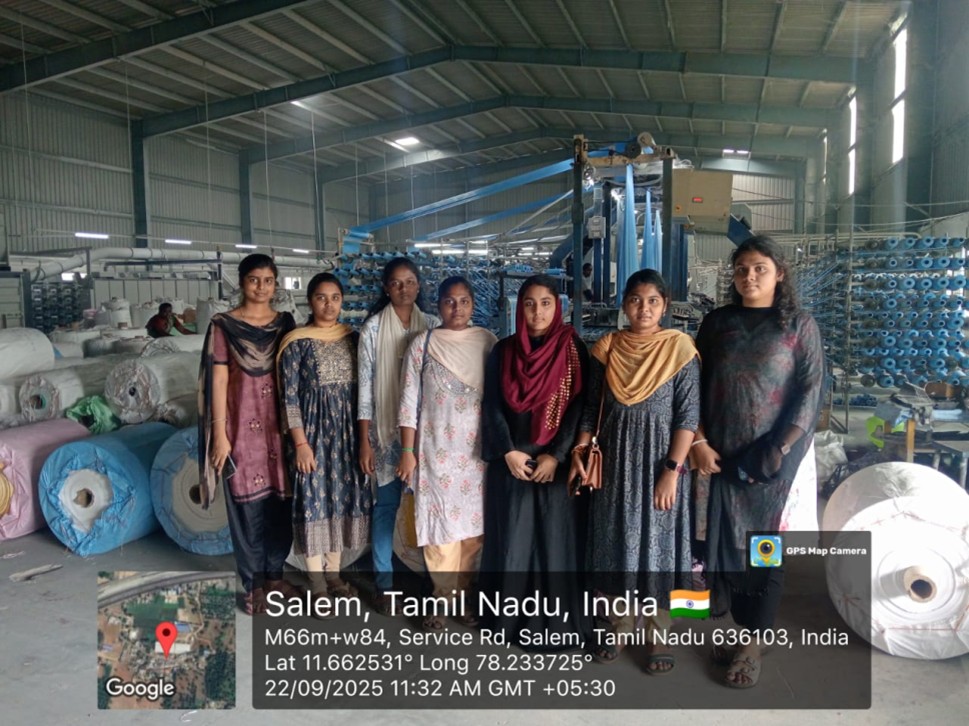
5. Competency Based Learning
Goal:To empower students with the ability to master relevant skills and promote lifelong learning.
Process:- Instructor identifies the competencies of the students and assigns a problem statement based on their levels.
- Students progress at their own pace and demonstrate their ideas, which are evaluated by the instructor.
- Ensures students meet proficiency benchmarks.
- Improves the ability to apply knowledge in real-world scenarios.
- https://youtu.be/Tlnnzb_88T8
- https://youtube.com/shorts/7TXHs2Xs8TQ?feature=share
- https://youtube.com/shorts/BNG6RflZktI?feature=share
6. Certification Based Learning
Goal:To equip students with industry-recognized skills, knowledge, and credentials that align with workforce demands.
Process:- Students gain skills aligned with current industry benchmarks.
- Students apply theoretical knowledge to practical scenarios.
- Ensures students meet proficiency benchmarks.
- Improves application of knowledge in real-world scenarios.




- https://youtube.com/shorts/ShAffMoAtY4?feature=share
- https://youtube.com/shorts/TYj2KDQa2Pc?feature=share
7. Project Evaluation through Hackathon Mode
Goal:To evaluate teams' ability to solve real-world problems under tight deadlines, showcasing creativity, technical skills, and innovation.
Process:- Students are given problem statements in themes such as AI, Blockchain, Machine Learning, sustainability, or open challenges.
- The Hackathon lasts 3 days.
- Projects are evaluated by industry experts, faculty, and peers on originality, creativity, technical execution, teamwork, and impact.
- Fosters practical application of theoretical knowledge.
- Encourages interdisciplinary learning and real-time project execution.
- Promotes creativity and innovation.
